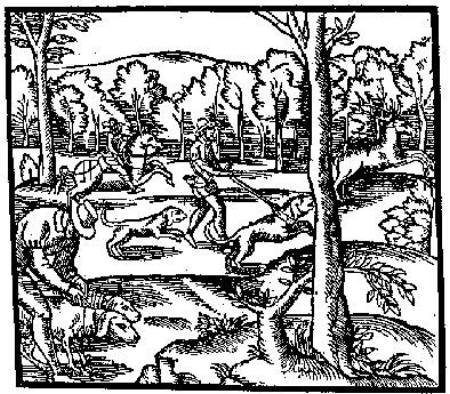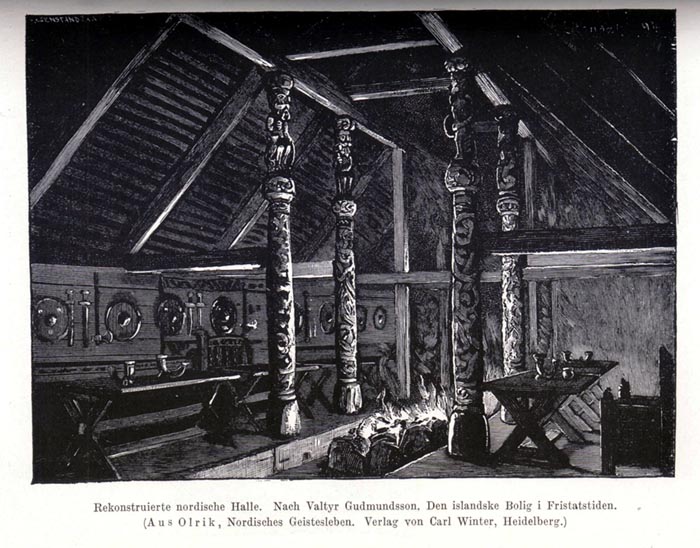We
have always had a special place in our hearts for the deer we find on needlework.
Whether it be the cross eyed seated deer, the one with the zigzag
antlers,
or our latest favorite the Norfolk deer with its foot on the little
mounds or hillocks, usually in pairs facing each other.
As we were working on Imitation and Improvement, we were fascinated with the way the girls placed elements that they would see in their everyday lives on their samplers, like the deer on the little hillocks which abound in Norfolk. Here is a little excerpt from the book:
We
also enjoy exploring the symbolism from various sources that would have been in
vogue during various periods of history from which needle workers might have
pulled ideas and reasons to include them on their samplers.
It’s
hard to know, did the girls or their teachers plan the motifs that we find on
the historic samplers to carry certain meanings or was it purely an accident? I
like to see if the meanings of the symbols between various countries are
similar? What about different types of
artwork that symbolism is used in, did the meanings carryout the same? So
many symbols come to us from biblical sources and stories found in the bible.
Most
the time, for Julie’s sake, we call them “Bucks”. Do you think of them as Bucks, Deer, Hart, or Stags? There are various meanings depending on how you view them in various aspects of history.
Below
I will share some of the symbolism I have found in various sources and we will
also share some images from our collection of various “Bucks” we have and
enjoy. Which is your favorite?
For
Julie, it’s that cross-eyed lazy Buck!
Hart:
The Hart is a symbol of the Wisdom
of God: gentleness; pride and manliness; solitude and purity; Christ as the
love of God on Earth; an image of Christ; the adversary of Satan. The medieval bestiaries gave it the power to
suck snakes from their holes. The hart
is depicted being hunted, at rest, running and sometimes chained to the tree of
life. The hart is the male European red
deer over five years old which has large antlers. The female is called a hind and lacks antlers. In North America, this species is called the
elk.
Stag:
Sampler Motifs and Symbolism by Patricia Andrle and Lesley Rudnicki says the stag is a symbol of Christ
vanquishing evil; faithfulness; charity. It was thought to be the enemy of the
dragon and could kill one by spewing water on it.
Embroidery Motifs from Old Dutch samplers by Albarta Meulenbelt-Nieuwburg asserts that the hart symbolizes both gentleness and pride. The stag with spreading antlers is the
symbol of the hunt, and with a shining cross between its antlers I is the
attribute of St. Hubert, the patron saint of hunters to whom, according to
legend, such a stag appeared while he was out hunting.
Chinese Symbolism: Wealth and Achievement The University of Indianapolis has a great article on symbolism:
Germanic:
An
Anglo-Saxon royal scepter found at the Sutton Hoo burial site in England
features a depiction of an upright, antlered stag. In the Old English language
poem Beowulf, much of the first portion of the story focuses on events
surrounding a great mead hall called Heorot, meaning "Hall of the Hart.
Greek:
In Greek
mythology, the deer is particularly associated with Artemis in her role as
virginal huntress. Actaeon, after witnessing the nude figure of Artemis bathing
in a pool, was transformed by Artemis into a stag that his own hounds tore to
pieces. Callimachus, in his archly knowledgeable "Hymn III to
Artemis", mentions the deer that drew the chariot of Artemis:
"in golden armor and belt, you yoked a golden
chariot, bridled deer in gold".
Scythian:
The
Scythians had some reverence for the stag, which is one of the most common
motifs in their artwork, especially at funeral sites. The swift animal was
believed to speed the spirits of the dead on their way, which perhaps explains
the curious antlered headdresses found on horses buried at Pazyryk.
Celtic:
The
Insular Celts held deer as supernatural animals, "fairy cattle" that
were herded and milked by a localized and benevolent fairy giantess (a bean
sìdhe) in each district, who could shift shape to that of a red deer; in the
West Highlands, she selected the individual deer that would be slain in the
next day's hunt.
Deer
Spirit Symbols:
Gentleness, Kindness, Compassion, Innocence,
Motherhood, Grace, Femininity, Swiftness, Peace, Subtlety, Adventure, Psychic
Power, Awareness, Renewal, Acceptance, Connection to Spirit
Stag Spirit Symbols:
-
Masculinity, Regeneration, Guidance, Gentleness, Healing, Connection to the
Earth and the Forest, Alertness, Psychic Power, Pride, Independence,
Purification, Strength, Nobility
Message/Meaning:
Deer totems and their antlers bring the
message and meaning of higher connection and awareness. Antlers act as
spiritual antennae, and if an antlered deer or stag has entered your life pay
attention to inner thoughts and perceptions. Take a moment to stop and listen
to your inner voice - it is likely that an important message is going to come to
you.
The
deer spirit and totem guides us to get more in tune with our feminine energies.
If you’ve seen a deer person consider the medicine of gentleness, grace, and
compassion. When deer spirits show up in your life it is time embrace the
kindness.
Deer
in Dreams:
In
Dreamtime, deer signifies a gentle, natural beauty and grace. The gifts of deer
bring us quick and powerful bursts of high energy. The key is to see life as
play.
Cultural
Symbolism:
To Native Americans, deer and all
forked-horned animals symbolized dangerous psychic and spiritual powers that
had a double nature. By observing this creature, humans learned to hide when
being hunted.
An Introduction to Heraldry by Stefan Oliver
The
Latin name for deer, ‘cervi’, comes from the Greek ‘ceraton’, horns. Stags are
the enemies of serpents: as soon as they feel the symptoms of illness, they
entice snakes out of their holes with the breath of their noses, and overcoming
their harmful poison, feed on them and are cured. The are entranced by the
whistling of a pan-pipe; they can hear anything with pricked ears, but nothing
if they lay their ears back.
The
nature of deer is like that of members of Holy Church who leave this homeland
(that is, the world) because they prefer the new pastures of heaven, and
support each other on the way; those who are more perfect help their lesser
brethren through their example and good works.
If they find a place of sin, they spring over it at once, and if the
devil enters their body after they have committed a sin, they hasten to Christ,
the spring of truth, and confess, drinking in his commandments, and are
renewed, laying aside their old guilt.
Tragelaphus
The
word ‘tragelaphus’ comes from the Greek; although they are of the same kind as
stags, they have hairy forequarters like he-goats, and luxuriant beards on
their chins. They are only found near
the River Phasis on the Black Sea. The
bride says of the bridegroom in the Song of Songs; ‘My beloved is like a roe,
or a young hart’ (2;9), Christ is therefore like a roe in His humility, when He
was made flesh, and like a fawn born of deer, that is of the patriarchs, from
whom He was descended in the flesh, in the variety of His virtues and in His
innocence.
Bestiary by Richard Barber
Psalm
42:1 reads, “As the hart (deer) panteth after the water brooks, so panteth my
soul after thee, O God” Thus the deer, or hart, symbolizes piety and religious
aspiration. The deer, and particularly,
the stag, symbolizes solitude and contemplation because of the belief that it
leads a primarily solitary life.
Because of the form of the stag’s antlers, they are often said to
represent the Tree of Life.
The
Legend of St. Eustace
In
the cemetery and in Christian religious works the stag is usually portrayed
with a cross attached to its antlers.
This refers to the tale of St. Eustace who supposedly lived in the
second century. You can find this story in several sources. Therefore, a stag
with a crucifix in its antlers symbolizes piety and devotion. The stag with the
crucifix is also a symbol of St. Hughbert. There is no documentation that
either of the saints ever existed.
Stories in Stone, A Field Guide to Cemetery Symbolism and
Iconography, Written and photographed by Douglas Keister
Deer:
Universally benevolent symbol associated with dawn, light, purity,
regeneration, creativity and magic.
Stag:
Solar emblem of fertility, the antlers symbolize the tree of life, the sun’s
rays, longevity and rebirth. Antlers have been used as headdresses for dieties;
on the Celtic antlered god Cerunnus they represented spring and fecundity.
Signs and Symbols: Identification and analysis of the visual
vocabulary that formulates our thoughts and dictates our reactions to the world
around us. By Mark O’Connell and Raje Airey
Imitation
and Improvement: The Norfolk Sampler Tradition
This
new publication is full of lovely deer that you will enjoy as well as many
other beautiful motifs found typically on the Norfolk Samplers. If you haven’t purchased your copy yet, you
may want to proceed to our web site or one of the retailers currently carrying
this edition and add it to your needlework library. Suggested retail is $92.95.
If you are in a guild and make a group purchase of 8 or more copies, we
are still offering the special guild price of 20% off the cover price plus
shipping. Which will bring the price down to $74.36 plus shipping. For guild purchases, just email us at inthecompanyoffriends@gmail.com and we will figure
the cost of shipping and total the order for you.
Joanne is also available for talks and book signings and we would be happy to put you
in touch with her so that you can schedule this for your group or shop.
We
have some special products designed from the sampler we created in the style of
the Norfolk sampler which you receive the chart for as well in the book. You can find these products at our web site
as well. Keep watching as we will be adding new products very soon.
List
of shops carrying the book:
In the US:
3 Stitches in Spring, TX
Acorns and Threads in Portland, OR
Attic Needlework in Mesa, AZ
Cecilia's Samplers in Branson, MO
The Mad Samplar in Yadkinville, NC
Needle in a Haystack in Alameda, CA
The Scarlet Letter in Sullivan, WI
Shepherd's Bush in Ogden, UT
The Silver Needle in Tulsa, OK
Stitcher's Stash in Brookville, PA
In the US:
3 Stitches in Spring, TX
Acorns and Threads in Portland, OR
Attic Needlework in Mesa, AZ
Cecilia's Samplers in Branson, MO
The Mad Samplar in Yadkinville, NC
Needle in a Haystack in Alameda, CA
The Scarlet Letter in Sullivan, WI
Shepherd's Bush in Ogden, UT
The Silver Needle in Tulsa, OK
Stitcher's Stash in Brookville, PA
In Canada:
Amy Mitten Designs
Essamplaire
Traditional Stitches
In the UK:
The Sampler Guild
In Australia:
Apple Gallery
On Sunday, March 24th, Joanne Martin Lukacher will be speaking at the Marshall House in Vancouver, WA. Stop by if you are in the area, but do please rsvp to jmpknit@msn.com. The event is free, but since seating is limited, a reservation is definitely required.
Joanne will also be speaking at the first ever Penn Dry Goods Market Show and Sale in Pennsylvania! May 17 and 18th, this wonderful event is coming to the Schwenkfelder Library and Heritage Center! Take a look at their lineup on the Schwenkfelder website. We'll be there and would love to see you!






















